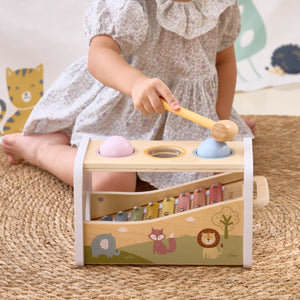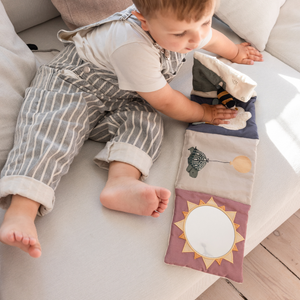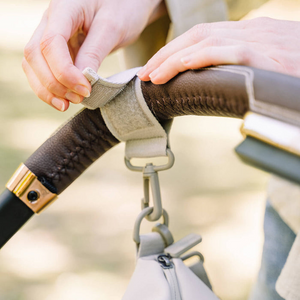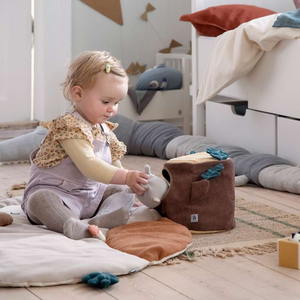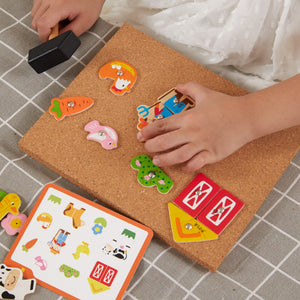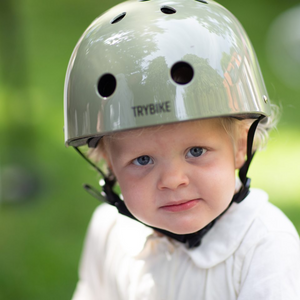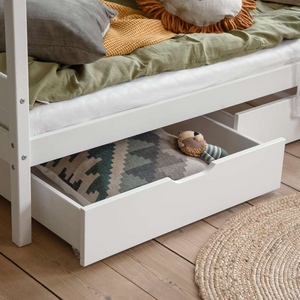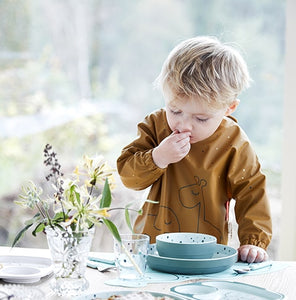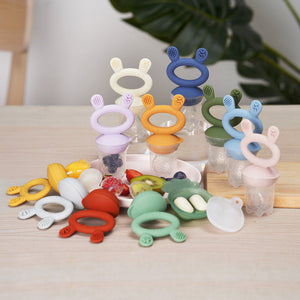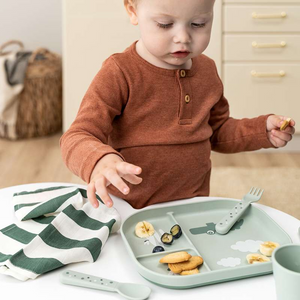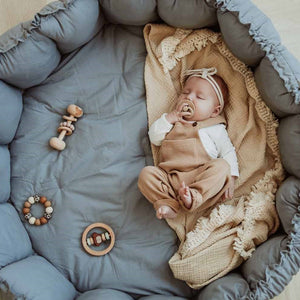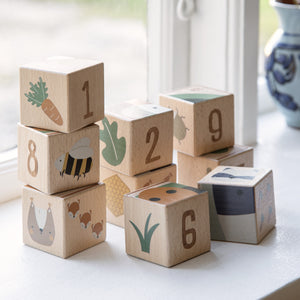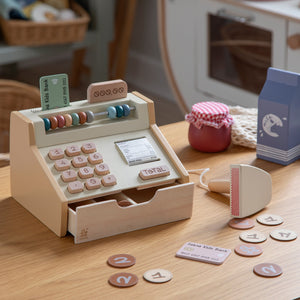Many of you probably know it – the big challenge at the dinner table. Mealtime can, for many, quickly become a challenge with hungry and impatient children who throw oatmeal on the floor or refuse to eat anything at all.
We have written a few good tips that hopefully can help you make mealtimes a cozy experience where everyone wants to join in
-
Calm and fixed frames
- One of the prerequisites for it to become a cozy mealtime is that you ensure to create calm. This means, among other things, that the TV and radio should be turned off and mobile phones should be put away. At the same time, it would be a good idea to set a fixed frame around the meal with a duration of about 30 minutes. By saying “now there is food” and “thank you for the meal” you give the children a clear signal about the start and end of mealtime.
If there is an escalation to restlessness, you best avoid conflicts by ignoring it and instead distracting the little one by talking about something he/she finds interesting and fun. Generally, it is always good to be positive about your child and their meal.
- One of the prerequisites for it to become a cozy mealtime is that you ensure to create calm. This means, among other things, that the TV and radio should be turned off and mobile phones should be put away. At the same time, it would be a good idea to set a fixed frame around the meal with a duration of about 30 minutes. By saying “now there is food” and “thank you for the meal” you give the children a clear signal about the start and end of mealtime.
-
Fixed seats
- Another initiative that will also help create calm at the table is the distribution of fixed seats.
This may not always be well received by the little ones, who will likely try to direct you parents around – just like so many other small strong-willed beings But here YOU must be more strong-willed and stick to the seats that you think fit best in the family system.
- Another initiative that will also help create calm at the table is the distribution of fixed seats.
-
Don’t eat too late
- Remember that children are children and therefore are also hungry when they are hungry
It is best to eat around 5:30 PM – 6:00 PM – preferably not later. Otherwise, the children will be too tired and exhausted to eat, and the calm will most likely turn into restlessness. If you serve the food early while they are hungry, the chance for a calm and cozy mealtime will be greater
- Remember that children are children and therefore are also hungry when they are hungry
-
Have the food ready
- Before you sit your hungry kids at the table, it would be a good idea to have the food completely ready – especially if the children are small.
If you have a little rascal between 0-1 year, you can easily mash the food before it is set on the table. At that age, they are just hungry and completely indifferent to how it looks. However, if your child is one year or older, you should first mash the food when it is on the table. This way, the child gets familiar with the contents of the food, which is a need that arises at that age. Otherwise, it may end up that he/she will not want any of the food.
- Before you sit your hungry kids at the table, it would be a good idea to have the food completely ready – especially if the children are small.
-
A tablecloth is worth its weight in gold
- When the little one starts to eat by themselves, you will thank the gods for the invention of a tablecloth
If you don’t have a tablecloth on your table, there may be a chance that you will get a little irritated every time some food falls off the plate, or every time a glass of milk is spilled. And this irritation will only contribute to the little rascal spilling even more and even doing it on purpose. Because gosh, how funny do mom and dad look in their faces when some food falls on the table
- When the little one starts to eat by themselves, you will thank the gods for the invention of a tablecloth
-
Avoid glass and porcelain
- You quickly find out that your child's movements are not always predictable, which can quickly result in a broken glass on the floor. This is frustrating for you, but it can also be dangerous for your child. Therefore, you should only serve food in tableware made from child-friendly materials.
Bamboo and melamine are materials that are very robust and therefore perfect for children's tableware. Both for the dining table at home and when you are on the go. And fortunately, there is a sea of dining sets for children that are both practical and super nice in their design! Check out the selection at Mammashops right here
- You quickly find out that your child's movements are not always predictable, which can quickly result in a broken glass on the floor. This is frustrating for you, but it can also be dangerous for your child. Therefore, you should only serve food in tableware made from child-friendly materials.
-
No negative talk and involve junior
- In many homes with small children, the talk often goes on about how the children need to eat a little more or try this and that. This talk is not exactly positive and can end up being detrimental to both your child's appetite and mood. Therefore, there should only be talk about food if there is something positive to say.
Also remember to involve junior in the conversation at the dinner table, otherwise he/she will experience getting negative attention around food.
- In many homes with small children, the talk often goes on about how the children need to eat a little more or try this and that. This talk is not exactly positive and can end up being detrimental to both your child's appetite and mood. Therefore, there should only be talk about food if there is something positive to say.
-
Forcing does not help
- Sometimes it happens that your child gets a little defiant and doesn't want to eat the food. This is frustrating for you as parents, as you obviously want to ensure that your child gets something to eat. And what should you do about it, you might wonder?
First of all, you cannot and should not force your child to eat. It will in no way solve the situation, and it will almost feel like an assault on your child. Instead, make sure to give your child the necessary attention and praise for the food that has been eaten, after all.
- Sometimes it happens that your child gets a little defiant and doesn't want to eat the food. This is frustrating for you as parents, as you obviously want to ensure that your child gets something to eat. And what should you do about it, you might wonder?
-
Introduce timeout
- If you experience that your child, despite several warnings, does not behave as you wish, it may be a good idea to use timeouts. A timeout should be seen as a little breather in the room, on the stairs, or a completely different place where the little one can calm down. Remember to guide your child into the room in a calm tone, so the timeout is not perceived as a punishment.
This little breather should instead be seen as a clear signal that there are specific rules for how to behave in shared spaces.
- If you experience that your child, despite several warnings, does not behave as you wish, it may be a good idea to use timeouts. A timeout should be seen as a little breather in the room, on the stairs, or a completely different place where the little one can calm down. Remember to guide your child into the room in a calm tone, so the timeout is not perceived as a punishment.
Now you should be completely ready to take on the challenge. Enjoy and bon appétit!
/ Team Mammashop









